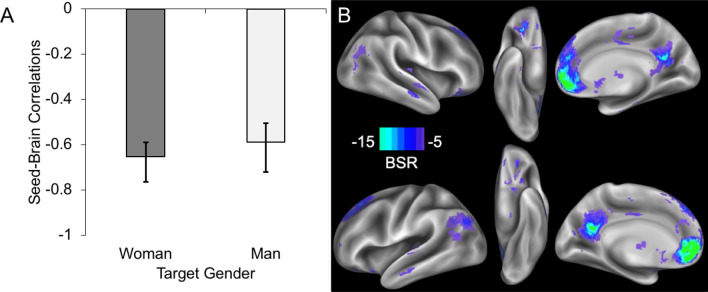Figure 3.
(A) Across both target genders, a significant latent variable emerged that captured a relationship between preferential responses to high (vs. low) SES in the VMPFC ROI and voxel co-activation in contrast images reflecting high SES > low SES. Seed-brain correlations plotted on the y-axis represent the strength of the relationship captured by the latent variable separately for faces depicting women and men. The error bars represent confidence intervals computed through a 2000-sample bootstrapping procedure56. (B) Voxel-wise co-activation patterns that most strongly contribute to the latent variable. Lateral, ventral, and medial views are displayed separately for the right hemisphere (top three images) and left hemisphere (bottom three images). Voxels were thresholded at BSR ≤ − 5. Note that the directionality of brain co-activation (B) needs to be interpreted in conjunction with the bar graph (A); lighter colored voxels indicate greater co-activation as a function of increasingly preferential VMPFC responses to high versus low SES.

